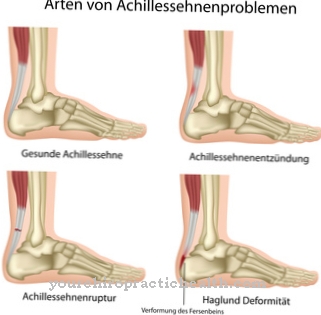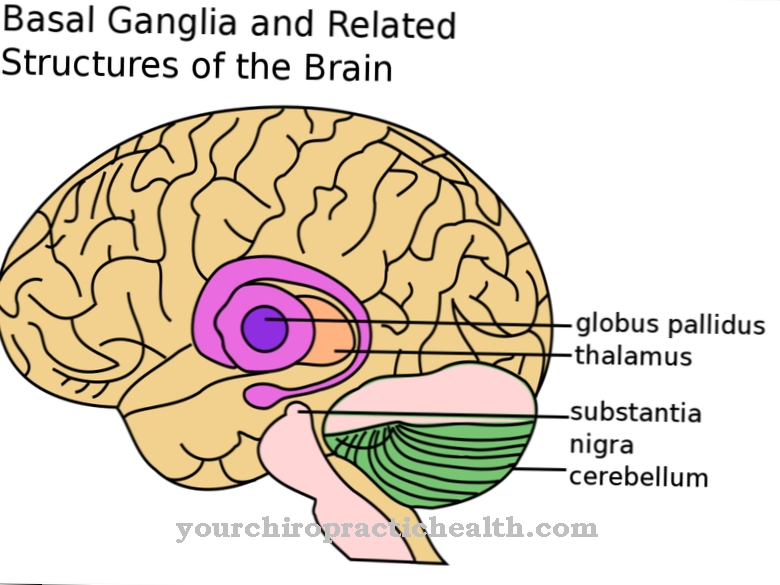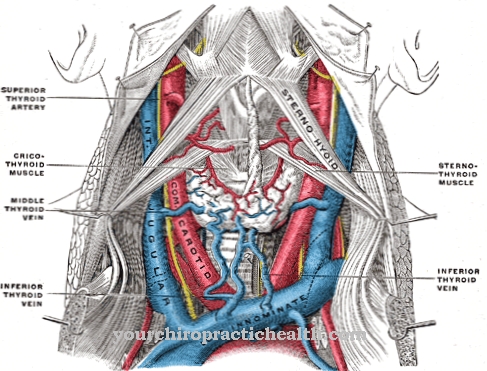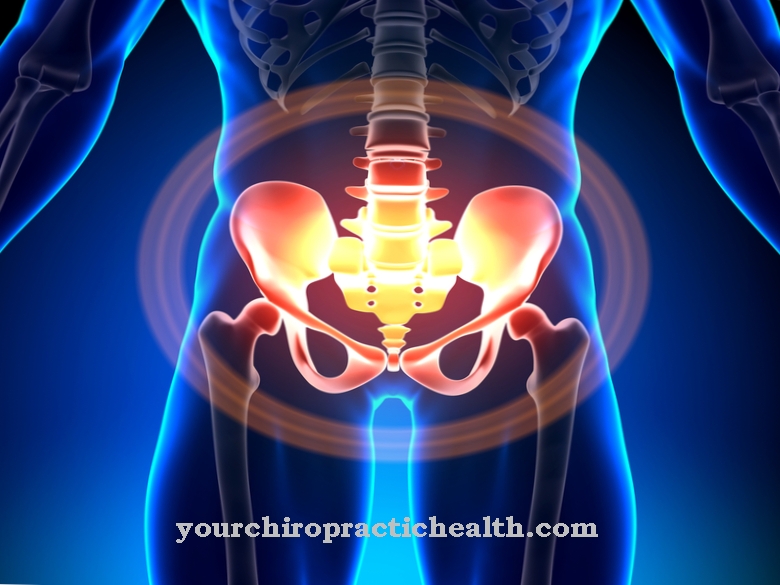Thoracic vertebrae are the twelve bony components of the middle spine. The most important tasks of this thoracic spine are to stabilize the upper body and protect the heart and lungs. Conditions such as osteoporosis can damage the thoracic vertebrae and create a painful hunchback.
What are thoracic vertebrae
Medicine refers to the bony parts of the thoracic spine as thoracic vertebrae. A person is equipped with a total of twelve thoracic vertebrae. These vertebrae are numbered downwards. According to this scheme, the individual vertebrae are called Th one to twelve. All thoracic vertebrae consist of a vertebral body, a vertebral arch and vertebral processes.
The thoracic spine is an integral part of the middle spine and plays a role in particular for the structure of the thorax. The individual vertebrae are in contact with the ribs and form the basis for the attachment of rib-vertebral joints and individual muscle groups. All thoracic vertebrae have a relatively identical structure and are networked with one another.
Animals are also equipped with thoracic vertebrae. However, they differ from the human thoracic vertebrae. Horses, for example, have 18 thoracic vertebrae. Goats and sheep, on the other hand, have 13. The functions and shape of animal thoracic vertebrae are, however, again similar to human anatomy.
Anatomy & structure
Vertebral bodies are short and cylindrically shaped vertebral components and make up the main mass of a thoracic vertebra. These vertebral bodies are connected to one another via so-called intervertebral discs. Near the back surface of the vertebral body, each vertebral body has a vertebral hole that provides space for the spinal cord and its vessels or nerves.
This vertebral hole is largely enclosed by the arched attachment of the vertebral arch. The vertebrae are lined up via the vertebral hole and form the so-called vertebral canal. The spinal nerves run through the intervertebral hole that is created in this way. The vertebral arch feet correspond to the bony boundary. The thoracic vertebrae differ from the other vertebrae in the spine in that they have a more round vertebral hole. In the middle area of the thoracic spine, the holes are also significantly smaller than those in the rest of the spine.
Vertebral processes are attached to the side of the vertebral arch of each thoracic vertebra. The lateral processes are also called transverse processes. The dorsal ones are called the spinous processes. In addition to the two transverse processes and a spinous process, each thoracic vertebra has two articular processes above and below, as well as two articular surfaces to the ribs. The rib-vertebral joints are stabilized by many ligaments, for example the ligamentum capitis costae radiatum.
Function & tasks
Thoracic vertebrae form several articular surfaces. Adjacent thoracic vertebrae are, for example, articulated to one another via the flat part of the vertebral arch. This articulated connection is available in four versions per vertebra. With the so-called rib heads, the thoracic vertebrae also each form the rib-vertebral joint. In this respect, the joint groups of two thoracic vertebrae lying on top of each other each accommodate the head of a rib.
Only the first, eleventh and twelfth thoracic vertebrae are not involved in a costal vertebral joint. The transverse processes of the thoracic vertebrae one to ten are also articulated with the rib cusps. Some of these articulations are concave and some of them are flat. The joints of the thoracic spine are partly involved in flexion and extension, lateral flexion and rotation. The flexion and extension of the trunk is mainly made possible via the joint connections of the thoracic spine. When tilting forward, the thoracic spine bends.
In contrast, it flattens out when bent backwards. The thoracic spine is also involved in the lateral flexion of the trunk. The same goes for the rotation of the upper body. Compared to the cervical spine or the lumbar spine, the thoracic spine is much less flexible, as it is firmly tied to the chest at every level. This firm binding supports the upper back and ensures the extensive stability of the upper body. Last but not least, the thoracic spine is responsible for maintaining the upper body. In addition, this part of the spine also protects the internal organs of the chest area, especially the lungs and heart.
You can find your medication here
➔ Medicines for back painDiseases
Injuries to the thoracic spine are less common than those of the lumbar or cervical spine. Bone metastases as a result of a tumor disease are most often found in the thoracic spine and can be clarified using a skeletal scintigraphy. Since the spinal canal in the thoracic spine is quite narrow, injuries in this area are often extremely serious and can, for example, cause paraplegia.
Accidental fractures occur, but are not seen very often. Diseases can, however, affect the thoracic spine. Disease-related complaints of the thoracic spine usually manifest themselves in the form of a hunched back or an increased back curve. Scoliosis, Scheuermann's disease or osteoporosis can affect the individual thoracic vertebrae. Medicine understands scoliosis to be a growth deformity in which there is a lateral deviation of the spine. Scheuermann's disease, on the other hand, is an ossification disorder of the spine.
As part of this phenomenon, the front parts of the thoracic vertebrae grow more slowly than the rear parts up to the age of 18. The resulting deformities are usually associated with severe back pain. If, on the other hand, osteoporosis attacks the thoracic spine, disease-related fractures of the vertebrae occur. These vertebral fractures are usually in the lower part of the thoracic spine. If the spinal canal is narrowed, radiating pain and sometimes even symptoms of paralysis occur.













.jpg)

.jpg)
.jpg)











.jpg)